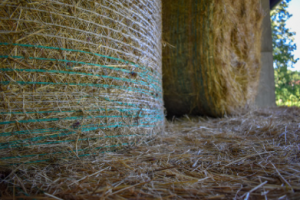Baling twines, or baling twine, is fine-sized sisal or synthetic sisal twined around a wooden handle used to bind a relatively small amount of material (including hay or straw) to a much larger bulk of the material. The large diameter of the string allows it to achieve a tighter bond than other similar-sized strings, and this results in it holding much heavier weights than other types of string, such as the braided bamboo variety. It is also possible to use this type of string to produce a much faster drying time between bales. As well as these benefits, the weight of the baling twine makes it ideal for storing material with a high density but is not suitable for storage using other methods.
 This type of baling twine comes in several different types, which cover a wide range of uses. However, it is commonly used to secure bales of hay or other feed material outside the unit. For this reason, most people choose to buy balers for their personal use rather than commercially available ones.
This type of baling twine comes in several different types, which cover a wide range of uses. However, it is commonly used to secure bales of hay or other feed material outside the unit. For this reason, most people choose to buy balers for their personal use rather than commercially available ones.
In terms of how the baling twine is tied, there are two main styles. The first uses a standard single rope system where each rope is pulled by hand. The second style uses a bail made from thick rope with an eye on how many strands of material the baler wishes to secure. These systems work perfectly well when securing bales, but the type of bail needed will depend on how many strands the material has.
There are several different uses for baling twine. Firstly, bale reeds can be tied to a secure beam or fence post using one of these twines. They can then be used as a barrier between the post and the next post, leading onto the next row of bales. As well as this, they can be tied around porches, sheds or any other secure structure to which one wants to secure material. Finally, they can even be used as support for an overhead guttering system.
The main factor that makes both of these systems so successful is how they’re tied. Each strand of baling twine will be completely different, which means that the system will always maintain the correct tension. When it’s put together correctly, the baling twine will come off neatly without any problems at all. The next factor farmers use baling twine for is securing hay. Whether securing a cow to a hay feed or protecting an alpaca bale, farmers use them all the time. It’s not surprising to hear that hundreds of thousands of Australian farmers use baling twine to protect their bales of hay against the harsh Australian conditions.
Another very popular use of baling twine is to secure bales to a frame or fence post. As well as this, they are also being used to secure an individual bale to a piece of equipment. This means that not only do they provide a high level of protection between two objects, but they make the process of fencing or erecting a strong fence easy to do.
However, the most common uses of baling twine aren’t just for the military or farming industry either. Many people like to use them to decorate their gardens, fences and more. To do this, it’s best to get a baling twine treated with a moth repellent or insect repellant first. Then, you should tie one end of the treated baling twine to whatever it is you’re trying to protect. It can often take several strands to cover the desired distance – this means that you won’t end up with tangled baling twine everywhere if you don’t treat your garden or fence properly.
In addition to its main function of protecting your crops and livestock from the elements, a baling twine can also be used in much more practical ways too. For instance, it’s great for tying up hay when moving it from field to field. If you live in an area where you have several different types of animals eating at the same time, then you’ll probably need to tie up the hay for each animal separately. Otherwise, it could all end up in one big mess, which can be avoided using baling wire.
If you want the best quality baling twine, see the company website here.
